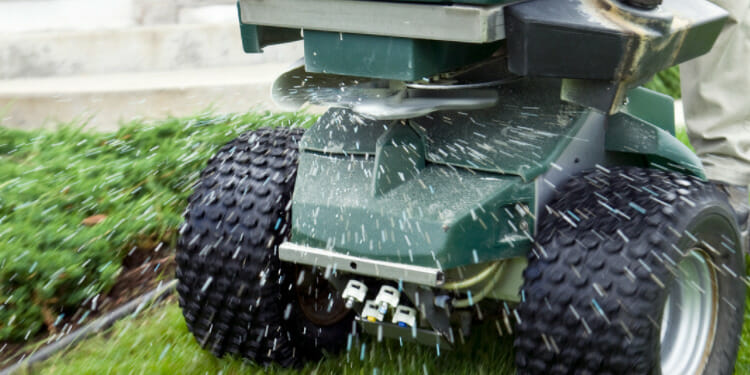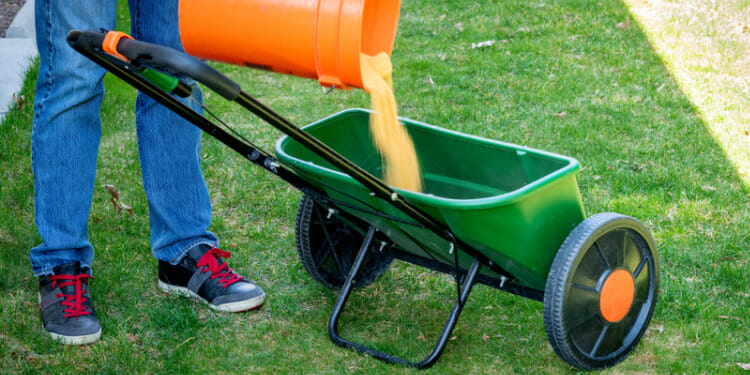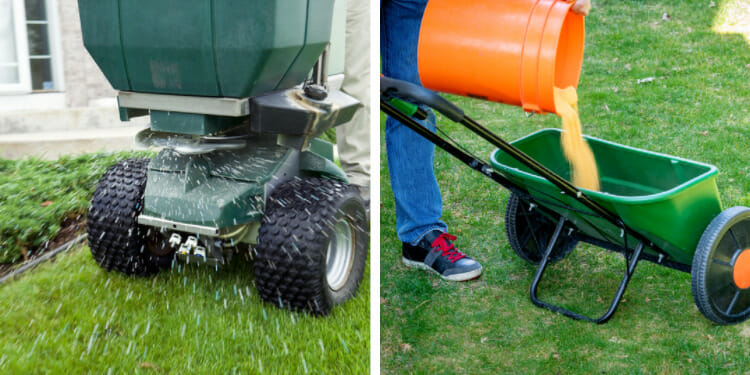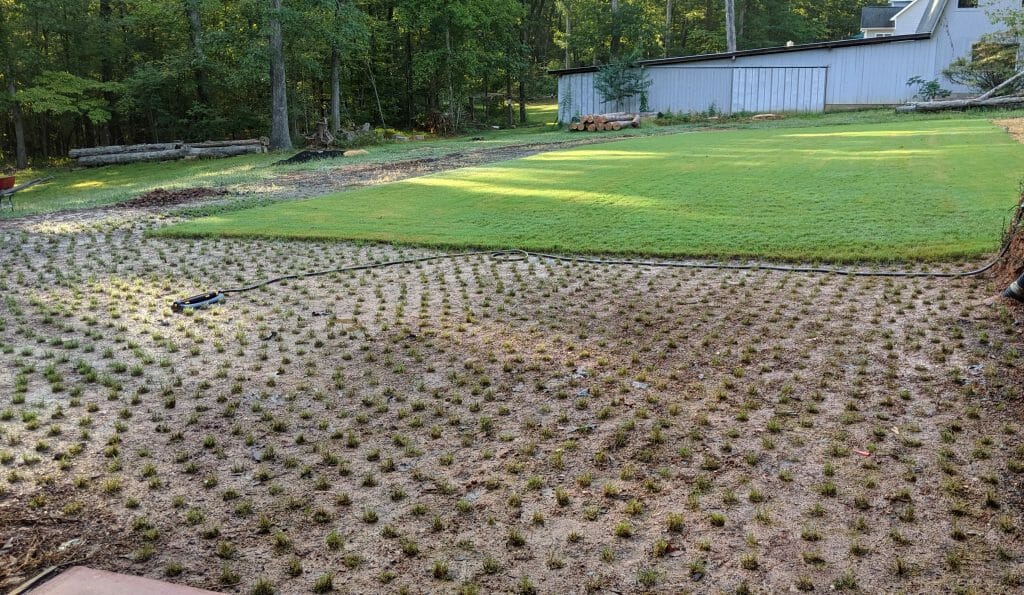Maintaining a lush and healthy lawn requires a fair bit of attention as well as a variety of tools to make your job easier. A fertilizer spreader is a handy tool that makes applying fertilizer easier. You can also use the spreader to apply other lawn products and seeding.
Broadcast vs Drop Spreader, what’s the difference? There are two types of spreaders – a broadcast spreader and a drop spreader. These work in slightly different ways. A broadcast spreader releases fertilizer across your lawn in a wide path, while a drop spreader is more direct in its application. A drop spreader only releases the fertilizer onto the lawn beneath its two wheels.
Let’s look at both of these in a little more detail, but before we do, we’ve tested 5 of the best fertilizer spreaders available, click here to read that article.
How Does A Broadcast Spreader Work?
A broadcast spreader primarily flings fertilizer in all directions as you push it along. This means that the fertilizer not only comes out from between the two wheels but also from either side of the hopper. This ensures a wider spread of fertilizer or other lawn products as you walk along.
Most of these broadcast spreaders have a guard on the back. This stops the fertilizer from shooting out and hitting the operator’s legs.
The flow rate is normally controlled with a dial to ensure that the correct amount of product is dispensed in all directions. The speed at which the product is dispensed relies heavily on the speed that the operator is walking at. So, if you walk slowly, the product is dispensed at a slower rate whereas if you walk fast, the product will be dispensed at a faster rate.
Broadcast spreaders are ideal for people who have a large lawn area to cover due their wide-spreading ability. This saves plenty of time because more ground can be covered with every pass.
| Pros of a Broadcast Spreader | Cons of a Broadcast Spreader |
|
|
How Does A Drop Spreader Work?
Drop spreaders work in a slightly different way. As their name would suggest, they drop the fertilizer as you walk along rather than broadcast it in all directions. Essentially, the product is dropped between the wheels at a rate that can be dialed in. This is generally not controlled by the speed that you walk at.
For this reason, a drop spreader is far more precise as to where the fertilizer is dispensed. It also means that you are unlikely to waste any product because you have complete control over where the product goes.
These types of spreaders are ideal for people who have smaller areas of lawn. They’re also perfect for using on lawns that are bordered by driveways and paths. By walking along the edge of the lawn beside the driveway, you’re not wasting product that would otherwise be broadcast onto the driveway but you’re also ensuring that the edge of the lawn is well-fertilized.
Apart from wasting expensive fertilizer, this also eliminates the possible staining of the driveway caused by the fertilizer.
The only disadvantage to this type of spreader is that you have to be far more precise in how you cover the area to ensure that your entire lawn is well-fertilized. This takes a little practice because it can be difficult to tell where you’ve been.
One way to overcome this problem, is to set your spreader to 50%. Then, cover the lawn in a criss-cross fashion by first walking in one direction in straight lines. Then, cross the lawn area again, walking across the lines that you’ve already completed. So, you would walk in a north-south direction first and then follow that by walking in an east-west direction.
| Pros of a Drop Spreader | Cons of a Drop Spreader |
|
|
The Key Differences Between A Broadcast vs A Drop Spreader
So, let’s explore the key differences between a broadcast spreader and a drop spreader. The table below identifies what these differences are.
| Broadcast Spreader | Drop Spreader |
|
|
In Summary
Whether you choose a broadcast spreader or a drop spreader will depend on the size of your lawn area. As a general rule, broadcast spreaders are better for larger lawn areas while drop spreaders are more convenient for smaller lawns or those that border driveways, paths and garden beds.






